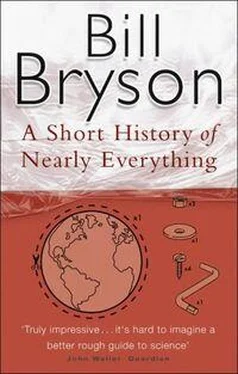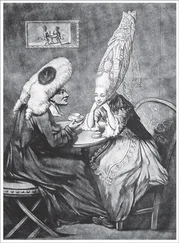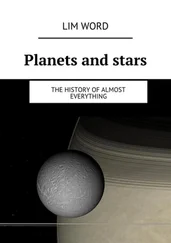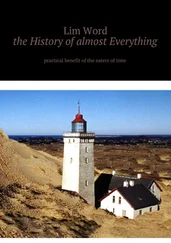Ten years later, by now a professor at the Case School in Cleveland, Michelson became interested in trying to measure something called the ether drift-a kind of head wind produced by moving objects as they plowed through space. One of the predictions of Newtonian physics was that the speed of light as it pushed through the ether should vary with respect to an observer depending on whether the observer was moving toward the source of light or away from it, but no one had figured out a way to measure this. It occurred to Michelson that for half the year the Earth is traveling toward the Sun and for half the year it is moving away from it, and he reasoned that if you took careful enough measurements at opposite seasons and compared light’s travel time between the two, you would have your answer.
Michelson talked Alexander Graham Bell, newly enriched inventor of the telephone, into providing the funds to build an ingenious and sensitive instrument of Michelson’s own devising called an interferometer, which could measure the velocity of light with great precision. Then, assisted by the genial but shadowy Morley, Michelson embarked on years of fastidious measurements. The work was delicate and exhausting, and had to be suspended for a time to permit Michelson a brief but comprehensive nervous breakdown, but by 1887 they had their results. They were not at all what the two scientists had expected to find.
As Caltech astrophysicist Kip S. Thorne has written: “The speed of light turned out to be the same in all directions and at all seasons.” It was the first hint in two hundred years-in exactly two hundred years, in fact-that Newton’s laws might not apply all the time everywhere. The Michelson-Morley outcome became, in the words of William H. Cropper, “probably the most famous negative result in the history of physics.” Michelson was awarded a Nobel Prize in physics for the work-the first American so honored-but not for twenty years. Meanwhile, the Michelson-Morley experiments would hover unpleasantly, like a musty smell, in the background of scientific thought.
Remarkably, and despite his findings, when the twentieth century dawned Michelson counted himself among those who believed that the work of science was nearly at an end, with “only a few turrets and pinnacles to be added, a few roof bosses to be carved,” in the words of a writer in Nature .
In fact, of course, the world was about to enter a century of science where many people wouldn’t understand anything and none would understand everything. Scientists would soon find themselves adrift in a bewildering realm of particles and antiparticles, where things pop in and out of existence in spans of time that make nanoseconds look plodding and uneventful, where everything is strange. Science was moving from a world of macrophysics, where objects could be seen and held and measured, to one of microphysics, where events transpire with unimaginable swiftness on scales far below the limits of imagining. We were about to enter the quantum age, and the first person to push on the door was the so-far unfortunate Max Planck.
In 1900, now a theoretical physicist at the University of Berlin and at the somewhat advanced age of forty-two, Planck unveiled a new “quantum theory,” which posited that energy is not a continuous thing like flowing water but comes in individualized packets, which he called quanta. This was a novel concept, and a good one. In the short term it would help to provide a solution to the puzzle of the Michelson-Morley experiments in that it demonstrated that light needn’t be a wave after all. In the longer term it would lay the foundation for the whole of modern physics. It was, at all events, the first clue that the world was about to change.
But the landmark event-the dawn of a new age-came in 1905, when there appeared in the German physics journal Annalen der Physik a series of papers by a young Swiss bureaucrat who had no university affiliation, no access to a laboratory, and the regular use of no library greater than that of the national patent office in Bern, where he was employed as a technical examiner third class. (An application to be promoted to technical examiner second class had recently been rejected.)
His name was Albert Einstein, and in that one eventful year he submitted to Annalen der Physik five papers, of which three, according to C. P. Snow, “were among the greatest in the history of physics”-one examining the photoelectric effect by means of Planck’s new quantum theory, one on the behavior of small particles in suspension (what is known as Brownian motion), and one outlining a special theory of relativity.
The first won its author a Nobel Prize and explained the nature of light (and also helped to make television possible, among other things). [17]The second provided proof that atoms do indeed exist-a fact that had, surprisingly, been in some dispute. The third merely changed the world.
Einstein was born in Ulm, in southern Germany, in 1879, but grew up in Munich. Little in his early life suggested the greatness to come. Famously he didn’t learn to speak until he was three. In the 1890s, his father’s electrical business failing, the family moved to Milan, but Albert, by now a teenager, went to Switzerland to continue his education-though he failed his college entrance exams on the first try. In 1896 he gave up his German citizenship to avoid military conscription and entered the Zurich Polytechnic Institute on a four-year course designed to churn out high school science teachers. He was a bright but not outstanding student.
In 1900 he graduated and within a few months was beginning to contribute papers to Annalen der Physik . His very first paper, on the physics of fluids in drinking straws (of all things), appeared in the same issue as Planck’s quantum theory. From 1902 to 1904 he produced a series of papers on statistical mechanics only to discover that the quietly productive J. Willard Gibbs in Connecticut had done that work as well, in his Elementary Principles of Statistical Mechanics of 1901.
At the same time he had fallen in love with a fellow student, a Hungarian named Mileva Maric. In 1901 they had a child out of wedlock, a daughter, who was discreetly put up for adoption. Einstein never saw his child. Two years later, he and Maric were married. In between these events, in 1902, Einstein took a job with the Swiss patent office, where he stayed for the next seven years. He enjoyed the work: it was challenging enough to engage his mind, but not so challenging as to distract him from his physics. This was the background against which he produced the special theory of relativity in 1905.
Called “On the Electrodynamics of Moving Bodies,” it is one of the most extraordinary scientific papers ever published, as much for how it was presented as for what it said. It had no footnotes or citations, contained almost no mathematics, made no mention of any work that had influenced or preceded it, and acknowledged the help of just one individual, a colleague at the patent office named Michele Besso. It was, wrote C. P. Snow, as if Einstein “had reached the conclusions by pure thought, unaided, without listening to the opinions of others. To a surprisingly large extent, that is precisely what he had done.”
His famous equation, E = mc 2, did not appear with the paper, but came in a brief supplement that followed a few months later. As you will recall from school days, E in the equation stands for energy, m for mass, and c 2 for the speed of light squared.
In simplest terms, what the equation says is that mass and energy have an equivalence. They are two forms of the same thing: energy is liberated matter; matter is energy waiting to happen. Since c 2(the speed of light times itself) is a truly enormous number, what the equation is saying is that there is a huge amount-a really huge amount-of energy bound up in every material thing. [18]
Читать дальше












